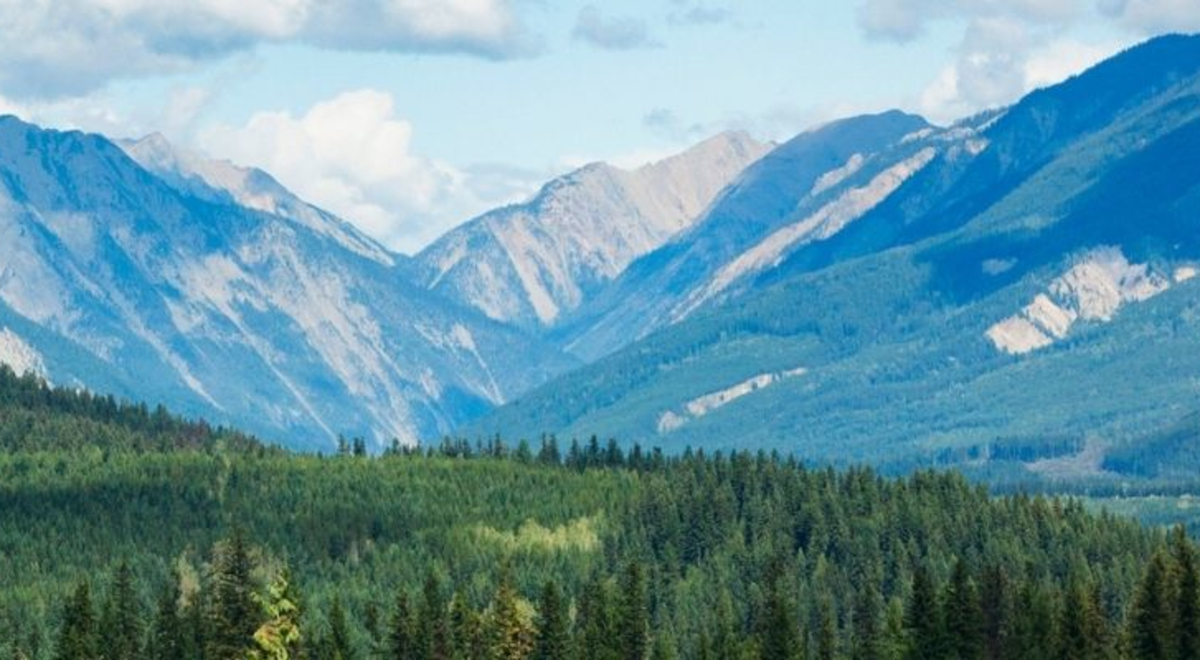Enter Canada’s vast wilderness and national parks where animals rule the kingdom. Renowned for having some of the best wildlife experiences in the world, Canada is home to a diverse range of species. Here are some of the creatures you could meet on a trip to Canada.
Grizzly Bear – British Columbia
Perhaps the most feared and revered of Canada’s animals, the grizzly bear is a true symbol of the wild. Once widespread across North America, habitat loss and hunting have reduced the species' range to the northeast of Canada and the USA, with around 20,000 thought to reside in British Columbia today. Solitary animals, save for mothers and their cubs, grizzly bears are at the top of the food chain with no predators aside from humans.
The best time to see bears in the wild is May through October. Ecotourism resorts, such as Great Bear Lodge, offer safe viewing programs where you can witness bears in their natural habitat.
Fun Fact – Grizzly bears are incredibly strong swimmers and can run at speeds of 55km/h.
Beavers – Nationwide
For over 300 years, the Beaver has been the national symbol of Canada. Beavers can be found right across Canada in rivers, lakes and creeks. Best known for building dams, canals and lodges, the beaver is one of the only mammals (other than humans) that can manufacture their own environment. Beavers are incredibly hard working creatures and spend most of their day building on their homes. The best time to see them is at sunset when they come out to grab dinner along the banks of the river.
Fun Fact - Beaver’s teeth never stop growing. They break as they chew on wood which stops them from getting too long.
Orca – British Colombia
The Orca, or killer whale as it is commonly known, is one of the world’s most powerful predators, inhabiting waters from the Arctic regions to the equator. Canada’s largest orca population is in the Pacific Northwest, in the coastal waters of British Columbia. Orcas live in both resident and transient pods, the former prefer eating fish and the latter hunt larger marine mammals, including seals, sea lions and a variety of whale species. Exceptionally intelligent mammals, they communicate with a sophisticated sonar system and employ pack-hunting tactics. Whale-watching charters depart from Vancouver and Victoria, with the season stretching from May through to October.
Fun Fact – The killer whale isn’t a whale at all – in fact, it’s the largest species of dolphin.
Moose - Nationwide
Found in almost every Canadian province and territory, moose are synonymous with Canada. The largest member of the deer family, they can grow to weigh 400kg. Yet despite their immense size, moose are powerful swimmers within days of birth and able to dive more than five metres to feed on plants at the bottom of lakes. Sights like this one in Algonquin Provincial Park, Ontario are common in the summer months, but come winter when moose shed their antlers, they can disappear into the wilderness with a stealthy silence.
Fun Fact – In the Algonquin language (First nations people of Quebec and Ontario) moose means eater of twigs.
Bull Elk – Jasper National Park, Alberta
High in the mountains of Jasper National Park, in the early morning light everything is silent, the only movement a herd of elk tracing a high ridgeline. Once ubiquitous in North America, elk were hunted almost to extinction by 1913. Reintroduced to Alberta from USA's Yellowstone National Park in 1917, today this region is home to one of the largest elk populations on the continent. Though valued by First Nations people for its hide, and a prized game animal, it’s the humble beauty, resilience and ability to thrive in vastly different environments that make the elk the ideal image of Canada’s wild and varied backcountry.
Fun Fact – Elk are social butterflies and love to live in a herd. The largest elk herd is estimated to have 11,000 members.
Red Fox - Nationwide
If there is one animal resourceful enough to survive anywhere, it’s the red fox. Found in all of Canada’s provinces and territories, red foxes make their home in mountains, forests, deserts, grasslands and even in human-dominated environments. Their reserved nature and intelligence has earned them a reputation for being cunning, while they are actually rather shy and playful.
Foxes are solitary hunters with exceptional senses. They can hear low-frequency sounds such as prey digging underground, detect the slightest movement, and smell young prey hidden in dens nearby. While they are solitary hunters, foxes meet in the winter to mate, then both parents – the male dog and female vixen – stay together to care for their pups through the summer. Once they are old enough, the pups head off on their own, sometimes travelling up to 250km to find a new home.
Fun Fact - Fox pups are blind at birth, opening their eyes at two weeks.
Polar Bear – Churchill, Manitoba
As the planet warms and pack ice rapidly disappears, polar bears have become one of the most vulnerable mammals on Earth, forced to roam further to find food, shelter and reproduce. The remote southwestern shore of Hudson Bay at Churchill is the polar bear capital of the world, thanks to the thousand or so bears that gather in the subarctic tundra between July and November.
Though the bears still thrive here, the tides, currents and ice formation increasingly affect their livelihood. Coming face to face with a bear on a tundra buggy expedition from Churchill is not just an only-in- Canada experience, it’s a window into how fragile the future of these incredible predators has become. Polar bears are no longer a mysterious animal in the deep Arctic, they’ve become a symbol for the alarming impact humans are having on the environment.
Fun Fact – Polar bears are actually black, not white. Their fur is translucent, and only appears white because it reflects visible light.
Blue Jay – Eastern Canada
Toronto’s baseball team may have been named the Blue Jays on a whim by their owner in 1976, but the bird has become an icon across eastern Canada. A noisy songbird typically found in pairs, blue jays feed mostly on acorns, nuts and seeds, though have been known to eat eggs, too. The one mystery scientists can’t quite figure out is their migration patterns – some birds head south for the winter annually, while others stay in the snow.
Fun Fact - Blue Jays mate for life. Once a female Blue Jay chooses her mate, they will typically stay together for life.














